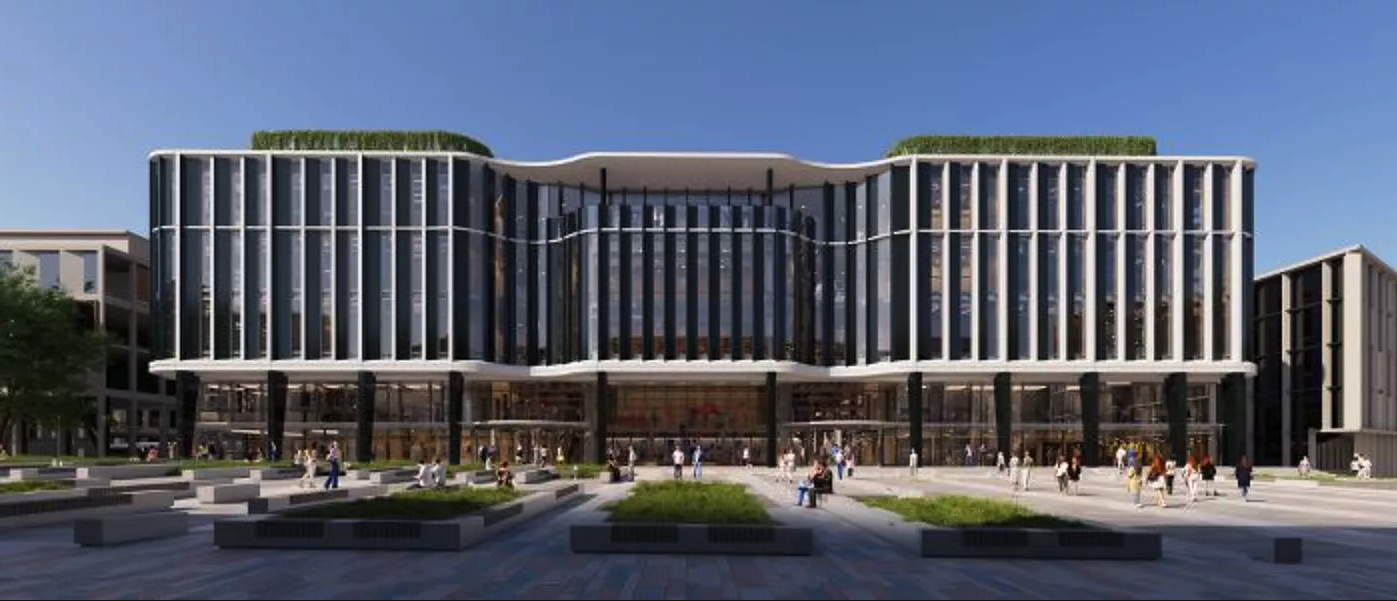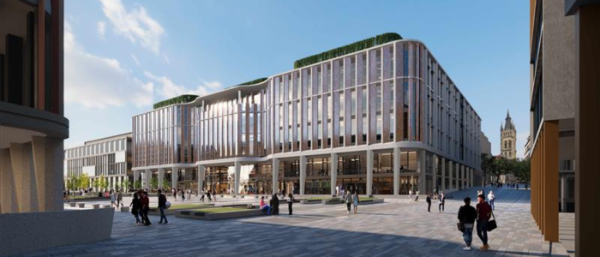
Developing the Key to the Future
Beginning with the opening of the James McCune Smith Learning Hub in 2021, the past five years have seen a period of transformation for the Gilmorehill campus. The support of donors like you has been essential to this extraordinary redevelopment which is transforming not only the University’s landscape, but its potential for local and global impact.
The Keystone Building
In October 2024, construction began on Glasgow’s most ambitious project yet. Located on the new St Mungo’s Square, the Keystone Building will be the largest building on campus in over 150 years. Second only to the iconic Gilbert Scott Building, Keystone will have twice the capacity of the Mazumdar-Shaw Advanced Research Centre. It will provide space for around 3,600 students and offer state-of-the-art facilities that will transform how people learn.
As well as bringing together teaching, learning and research spaces, the Keystone Building will provide a new home for the world-class James Watt School of Engineering. Within the walls of Keystone, engineering research will be nurtured and life-changing discoveries will be made. With specialist equipment and dedicated spaces for working on critical themes including quantum computing, healthcare technologies and sustainable electronics, this new development is more than a building, it’s a catalyst for change.

Sustainability is at the heart of this project. The Keystone Building will be not only the most sustainable building that UofG has ever built, but one of the largest net-zero-carbon university buildings in the UK. With solar energy and natural ventilation capabilities, lower carbon materials and cutting-edge energy efficient design, the space is an investment in a sustainable way forwards.
The building will also be home to the UK’s first centre for sustainable electronics and will anchor Glasgow’s work in renewable systems, circular technologies and energy-efficient design. It will foster research in low-power computing, green manufacturing and climate-resilient cities that will directly shape industry, regulation and everyday lives.
Continuing a Legacy
From industrial breakthroughs to developments in sustainability, the University of Glasgow has a proud history of engineering excellence. It was at Glasgow that James Watt transformed steam engine technology, igniting the Industrial Revolution. With support from our community, Keystone will continue the legacy of the innovators and pioneers who have gone before.
Today, engineering research is increasingly central to interdisciplinary research and to tackling major societal challenges. The Keystone Building will hold the key to the University taking on global grand challenges. It will help us to advance next-generation computing power, ultra-sensitive sensors for smartphones and groundbreaking healthcare applications. This isn't just research; it's the foundation of technologies that will transform our daily lives and industries worldwide.
The strategic design of the building aims to inspire new ways of working, teaching and learning. A blend of laboratory spaces, embedded neuro-inclusive workspaces and a maker’s workshop, will help students to discover their potential and inspire them to make a lasting impact on the world.
The strategic design of the building aims to inspire new ways of working, teaching and learning. A blend of laboratory spaces, embedded neuro-inclusive workspaces and a maker’s workshop, will help students to discover their potential and inspire them to make a lasting impact on the world.
It will also allow engineering students to interact and work alongside students from across the University and learn about the benefits of interdisciplinary collaboration early in their academic journeys. The space will also aim to strengthen partnerships with industry, government and academic institutions worldwide and attract research talent from around the globe.
Creating and Collaborating
Donors to the Keystone Building are making their mark in history; shaping the experience of students using their labs and creating space and opportunity for researchers to find solutions to some of the world’s most pressing problems.

Professor Muhammad Imran, Head of the James Watt School of Engineering, describes the importance of collaboration in the completion of a project like Keystone.
"Creating a building that truly fosters collaborative research and innovation is only possible through collaboration with our donor community,” he said. “Your support is helping us to design a space where students, researchers and partners can come together to address global challenges and drive positive change. Together, we are shaping an environment that will inspire discovery, partnership and impact for generations to come."
The Keystone Building is due for competition in the 2028/29 academic year.

